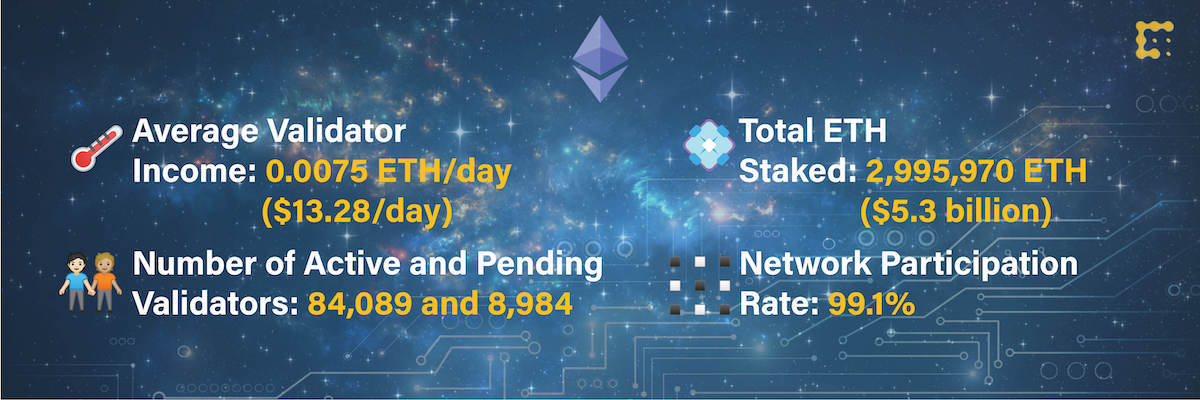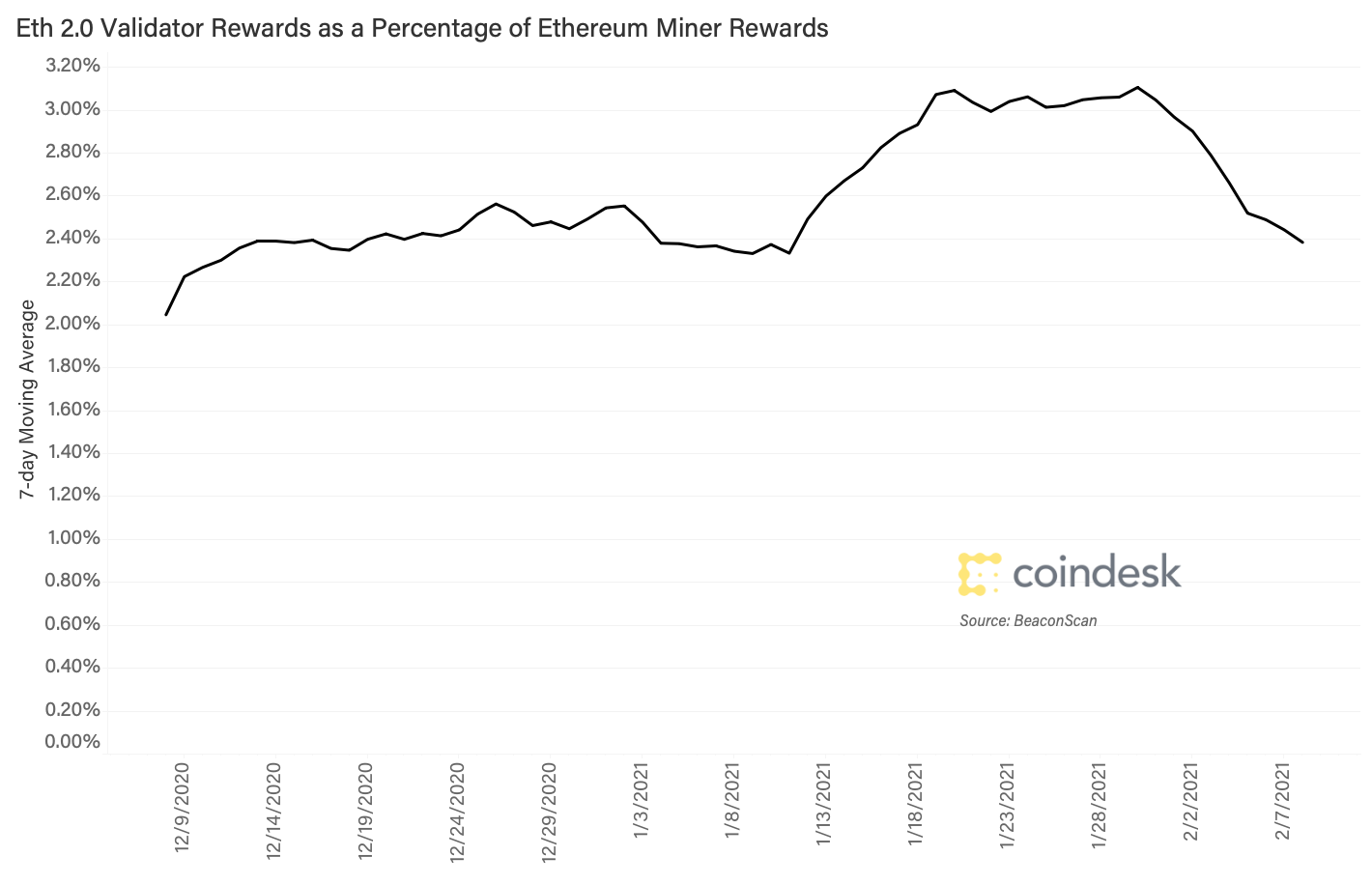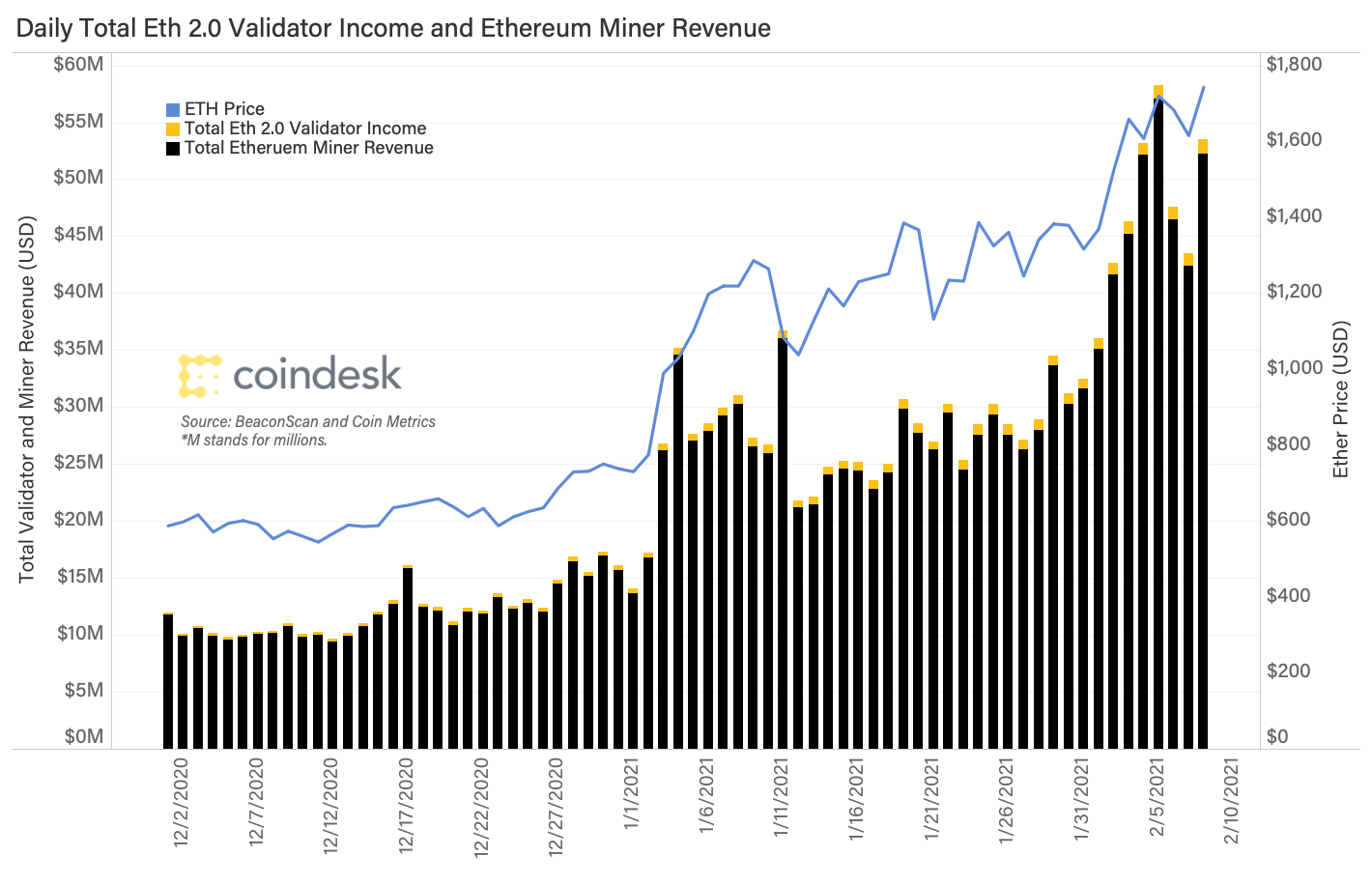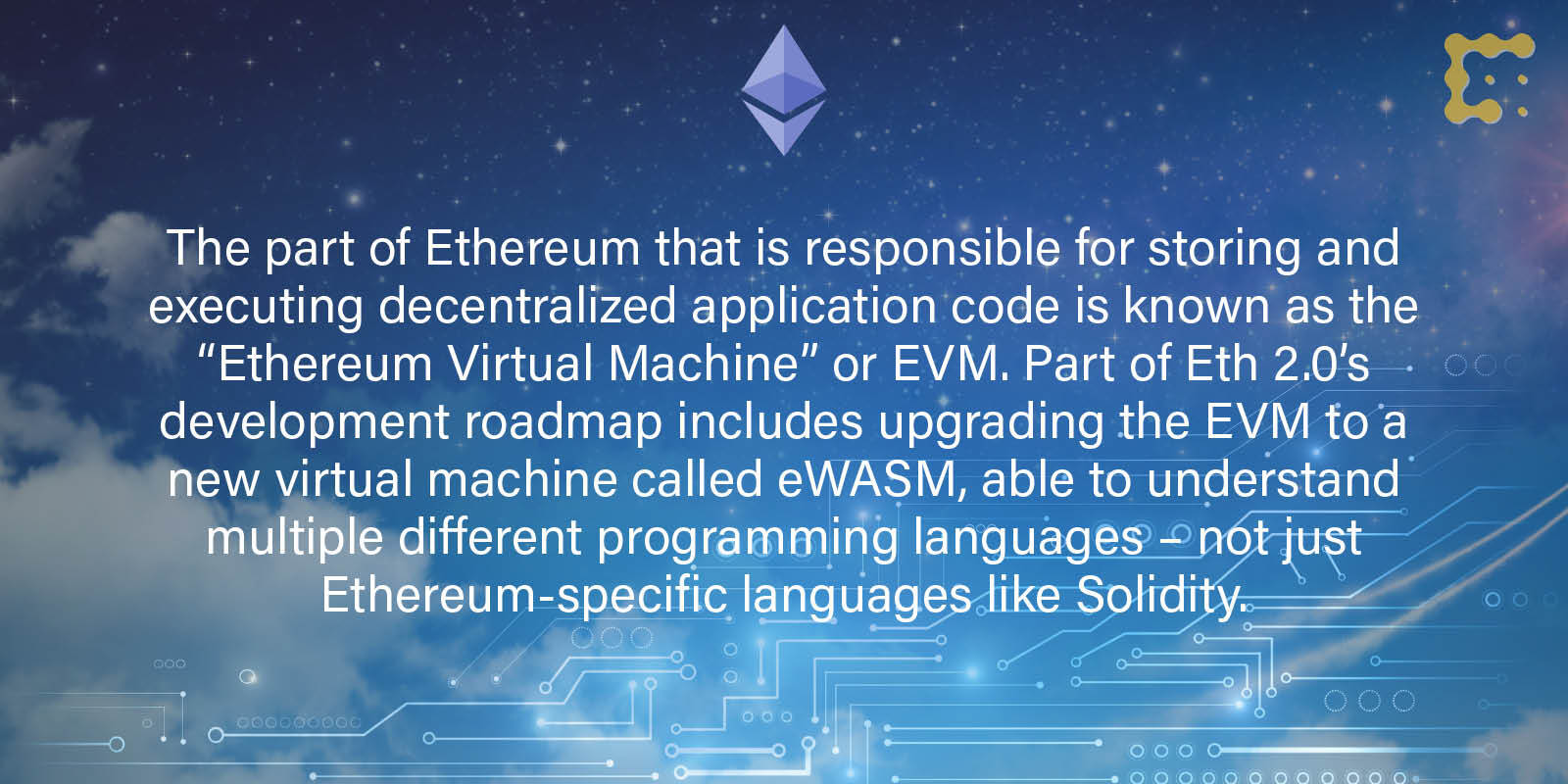“The biggest risk for Ethereum is that it could end up like the Concorde.”
That’s Lyn Alden, a renowned investment strategist, who wrote a blog post a few weeks back reviewing the Ethereum protocol from an investor’s perspective.
In her post, Alden points out that one of the biggest risks for the value of ether is that Ethereum never reaches mass adoption, just like the Concorde jet of the 1970s. While the Concorde was functional and operational for over 25 years, Alden writes, it never quite reached the product market fit it was seeking for commercial flight.
Ethereum has ambitious goals in aiming to become the world’s supercomputer. Developers of Ethereum anticipate the network will eventually host and run millions of active decentralized applications (dapps) ranging from finance to gaming to business and more.

Subscribe to the weekly Valid Points newsletter.
Key to this vision is a base layer protocol able to handle influxes of millions of dapp users and their transactions. The base layer of Ethereum, built for its long-term use case and vision, is Ethereum 2.0.
So whether you’re an Ethereum enthusiast, critic or somewhere in between, it’s hard to understate the importance of Eth 2.0 to the value of ether (ETH) in the eyes of investors.
This week, we'll explore ideas for a new Ethereum-compatible blockchain called LUKSO. Then we'll look at the bullish price activity of ether and how that’s impacting network rewards.
New Frontiers: LUKSO
Ethereum is supposed to be boring.
Lost in the Medium tech explainers and rainbow price charts predicting $20,000 ether by end of the year is an understanding of what the Ethereum ecosystem is actually trying to accomplish: decentralized infrastructure for the internet.
Fabian Vogelsteller – founder of digital economy blockchain LUKSO and co-creator of the ERC-20 token standard – is one entrepreneur zeroing in on that notion as he explores using Ethereum’s passive technology stack for the creative economy.
LUKSO is an Ethereum blockchain but not in the way most conceive of that idea. Rather, it’s a clone of Ethereum that is 100% compatible with user-facing tools such as MetaMask. The project is currently building a new chain based on Catalyst – a clone of the Beacon Chain meshed with a stripped down variant of popular Eth 1.x client Geth that remains in the R&D phase for Eth 2.0 developers – with the end goal of on-boarding the digital economy fringes such as art, clothing and collectibles.
Proving ownership with NFTs
Nonfungible tokens (NFT) have been hot lately. Billionaire entrepreneur Mark Cuban recently sold a handful of NFTs in his likeness for thousands of dollars while the pseudonymous HashMask creators raked in millions over one weekend. LUKSO has also been gaining traction in that arena. The project was used to verify ownership of digital clothing for the Helsinki Fashion Week, according to an August Vogue article.
“By securing each item on a blockchain and providing digital certificates of ownership, digital items can be limited in supply, which ultimately increases their value,” LUKSO co-founder and managing partner Marjorie Hernandez told Vogue.
Unlike other blockchain’s independent of Ethereum, LUKSO is not a competitor in any meaningful sense to Eth 2.0, Vogelsteller said. Rather, it's an independent blockchain for the digital economy that uses Ethereum’s tech stack in a similar manner to how Ethereum was originally conceived: as a quasi-programming-language for bringing blockchains to life.
And while it's conceptually simplistic to place blockchains into silos, projects like LUKSO break the mold by showing how Ethereum is more than one blockchain. Indeed, a larger ecosystem of many Ethereum-compatible blockchains such as Ethereum Classic, Quorum or NEAR exist in concert with Ethereum.
By focusing on one specific type of user, moreover, Vogelsteller hopes to address one problem Ethereum has yet to answer: “How can we make it usable for people?”
Pulse checking Eth 2.0
If you’re new to Valid Points and the topic of Ethereum 2.0 in general, be sure to check out our 101 explainer on Eth 2.0 metrics to get up to speed about jargon and terminology used throughout this newsletter.

Ether price seems to be hitting new all-time highs every day this week.
On Monday, news of Tesla’s $1.5 billion investment into bitcoin and the launch of CME ether futures sent prices to fresh all-time highs at around $1,720. On Tuesday, ether prices rallied again, even as sell-side liquidity dried up, and registered an even bigger high of $1,824.
As investors and traders scramble to revalue ether in uncharted price territories, miners and validators on Ethereum’s dual blockchain network are reaping record-breaking revenue.
Ethereum 2.0 validators earned their highest daily total income ever on Feb. 8, at $1.2 million. This only accounted for roughly 2% of what Ethereum miners earned that same day, which was in the ballpark of $52.2 million.

Eth 2.0 Validator rewards as a percentage of Ethereum miner rewards
The additional ether generated on Eth 2.0 by validators is a small fraction of what miners are making on Ethereum. While the total income of validators is expected to grow as new validators enter the network and Ethereum is eventually merged in Eth 2.0, it is not likely to ever reach the same amounts as those that miners receive.
This is because Eth 2.0, by nature of being a proof-of-stake protocol, is projected to issue ether as a form of rewards at a much slower and reduced rate than in a proof-of-work protocol. Eth 2.0 issues rewards in the form of annual interest that accrues to the staked ether of validators, instead of in the form of block rewards to miners.

Daily Total Eth 2.0 validator income and Ethereum miner revenue
On the topic of network rewards, the CoinDesk Eth 2.0 validator is ready for activation on Eth 2.0 in roughly seven days time. I’m excited to watch first-hand how interest accrues to the 32 ETH CoinDesk has staked on the network and the overall performance of our independent validator setup.
For more information on how CoinDesk went about setting up its infrastructure for this unique staking project, check out our next podcast episode when Will and I speak with CoinDesk Director of Engineering Spencer Beggs.
Validated takes
- A new Telegram channel called “UniWhales” is analyzing the moves of big token holders (whales) on Uniswap (Article, CoinDesk)
- Bitcoin and ether hit new all-time highs as Tesla invests $1.5 billion in BTC (Video, CoinDesk)
- Ethereum futures are now trading on the CME (Article, CoinDesk)
- What is the ERC-20 Ethereum token standard? (Article, CoinDesk)
- Ethereum 2.0 slashing event post-mortem (Blog post, Staked)
- Interview with MetaKovan, the pseudonymous investor who holds more than $2.5 million worth of NFT art (Podcast, The Defiant)
Factoid of the week

Open comms
Feel free to reply any time and email [email protected] with your thoughts, comments or queries about today’s newsletter. Between reads, chat with us on Twitter.
Valid Points incorporates information and data directly from CoinDesk’s own Eth 2.0 validator node in weekly analysis. All profits made from this staking venture will be donated to a charity of our choosing once transfers are enabled on the network. For a full overview of the project, check out our announcement post.
You can verify the activity of the CoinDesk Eth 2.0 validator in real time through our public validator key, which is:
0xad7fef3b2350d220de3ae360c70d7f488926b6117e5f785a8995487c46d323ddad0f574fdcc50eeefec34ed9d2039ecb.
Search for it on any Eth 2.0 block explorer site!
Finally, if you like what you read today and want more original insights from Will Foxley and me about Eth 2.0 development, be sure to check out our weekly podcast, “Mapping Out Eth 2.0.” New episodes air every Thursday.
DISCLOSURE
Please note that our privacy policy, terms of use, cookies, and do not sell my personal information has been updated.
The leader in news and information on cryptocurrency, digital assets and the future of money, CoinDesk is a media outlet that strives for the highest journalistic standards and abides by a strict set of editorial policies. CoinDesk is an independent operating subsidiary of Digital Currency Group, which invests in cryptocurrencies and blockchain startups. As part of their compensation, certain CoinDesk employees, including editorial employees, may receive exposure to DCG equity in the form of stock appreciation rights, which vest over a multi-year period. CoinDesk journalists are not allowed to purchase stock outright in DCG.
:format(jpg)/cloudfront-us-east-1.images.arcpublishing.com/coindesk/YUKNCU2GW5GGNLG7PAG4YZK3XU.jpg)

:format(jpg)/cloudfront-us-east-1.images.arcpublishing.com/coindesk/7CVB3J3H6NAKJPV2FI5FAAKNHY.jpg)
:format(jpg)/cloudfront-us-east-1.images.arcpublishing.com/coindesk/PFTJB3CBBZCGPEUSNCEZ7F3Z7U.jpg)
:format(jpg)/cloudfront-us-east-1.images.arcpublishing.com/coindesk/DOF5OEM4OJEJPL3AZZBOL4NGAY.jpg)
:format(jpg)/cloudfront-us-east-1.images.arcpublishing.com/coindesk/PJTR3KRDWJCRVE3QREM6KUOK7A.png)